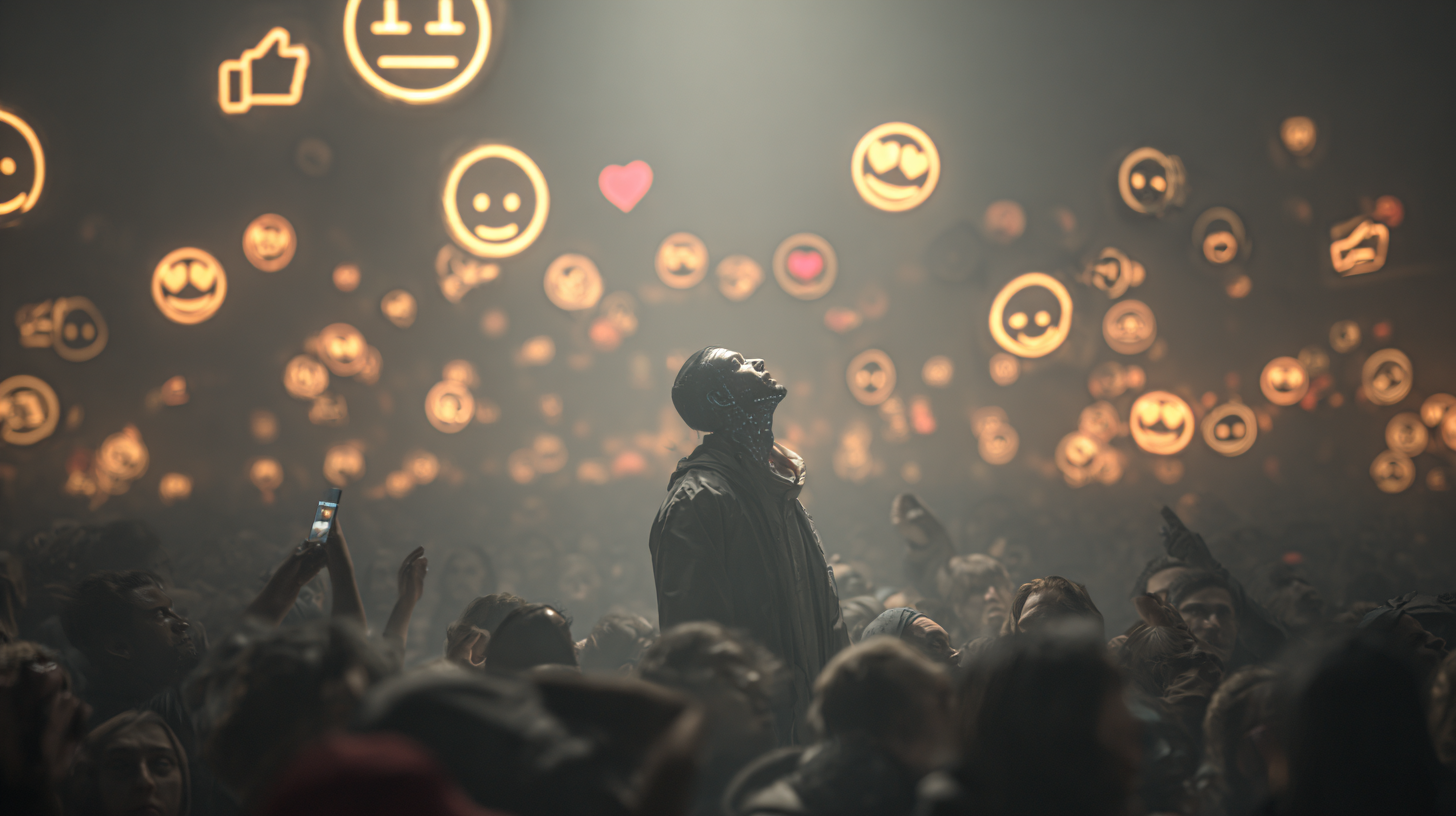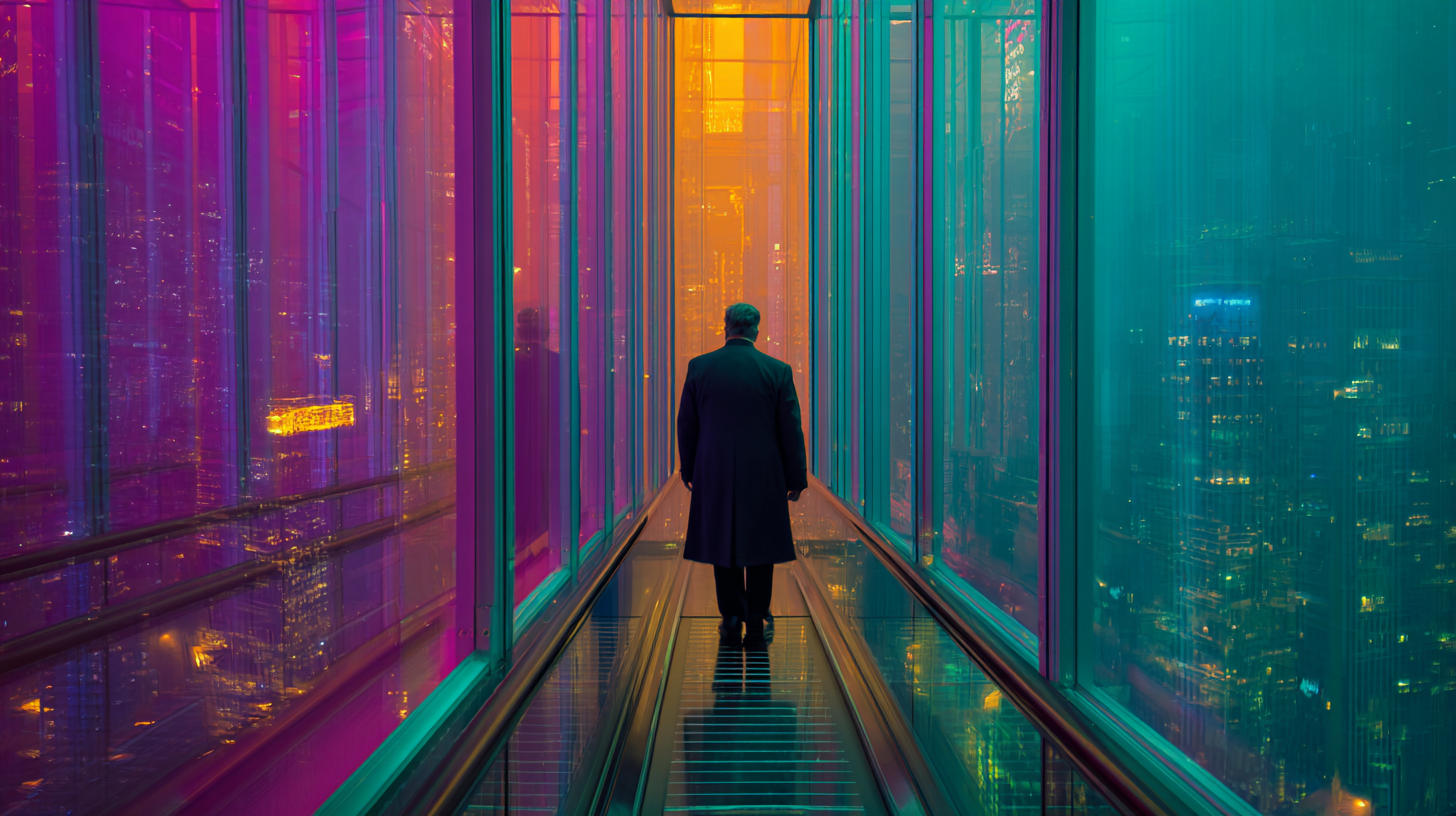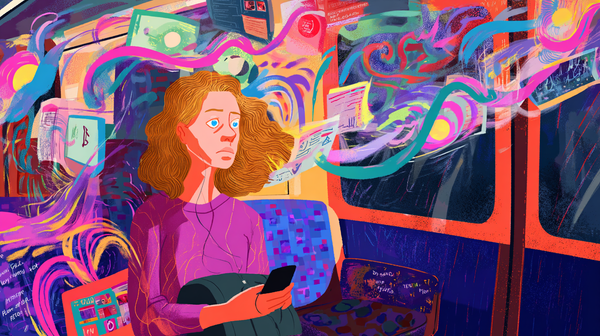Digital FOMO: The Fear of Missing Out in a Hyper-Connected World
In the age of endless feeds and disappearing stories, FOMO isn't a feeling-it's a design feature. Discover how platforms weaponise belonging, scarcity, and comparison to keep us addicted to the illusion of connection.

You wake, reach for your phone, and step straight into a party you weren't invited to. Someone's on a rooftop in Berlin. Someone's on a yacht in Croatia. Someone just landed a job they didn't even want last week. It's 7:03 a.m., and already you're behind.
What used to be a simple morning check-in has become a ritual of comparison. The scroll feels harmless-just "seeing what's new." But beneath it is something primal: the fear of exclusion. The sense that everyone else is out there living, while you're watching life through glass.
Psychologists have a name for it: FOMO-the Fear of Missing Out. It's "a pervasive apprehension that others might be having rewarding experiences from which one is absent". The definition sounds academic, but the experience is visceral. Your stomach drops. Your chest tightens. You start mentally cataloguing all the things you should be doing.

In earlier eras, FOMO was local. You saw your neighbours go to a dinner you weren't invited to. You heard about a concert after it happened. Today, it's global and continuous. The internet turned the private anxieties of exclusion into a public broadcast, streaming 24/7 from a thousand screens.
This is Digital FOMO-a form of ambient anxiety born not from what we lack, but from what we can see others having. Every post becomes evidence of someone else's momentum, someone else's meaning. And while you're busy watching their highlight reel, your own life starts to feel like behind-the-scenes footage.
The tragedy isn't just envy. It's erosion. Each time you scroll, you lose a little more of your own narrative-outsourced to the feed, calibrated by algorithms that know exactly which kind of joy makes you ache.
In a hyper-connected world, connection itself has become competitive. And the house always wins.
The Algorithm of Envy

Your feed doesn't just know what you like. It knows what hurts.
Every pause on a photo, every replay, every flicker of hesitation between scrolls - all of it is recorded, measured, and fed into a machine that's learning your private triggers. The system notices what makes your pulse quicken, what makes you feel lesser, what makes you crave more. Then it gives you exactly that. Again. And again.
This is algorithmic FOMO - a feedback loop built on micro-envy and micro-validation. The platforms don't want you to be satisfied; they want you to stay uncertain. Because uncertainty keeps you scrolling.
Take the disappearing story. Twenty-four hours and it's gone. That temporal limit isn't aesthetic - it's psychological. It activates loss aversion and the variable reward schedule, the same reinforcement loop that keeps gamblers glued to slot machines. Each tap holds the possibility of social reward - a like, a message, a flicker of belonging - and that possibility, not the payoff, keeps the behaviour alive.

The more anxious you become about missing something, the more valuable the feed becomes to you. And the more valuable you become to it. Your attention isn't the product - it's the raw material.
This is the dark genius of modern design: it turns emotion into engagement, and engagement into profit. The algorithm doesn't care whether you feel joy or jealousy - only that you feel. Because feeling means staying.
So every day, the feed curates a perfect storm of other people's victories - close enough to identify with, just far enough to envy. A friend's promotion. A stranger's holiday. The ex's new partner. Each one a small spark of discomfort. Multiply that by a billion users and you have a global nervous system optimised for unease.
FOMO isn't a glitch of the digital age. It's the engine. And it runs on the fuel of your attention.
Scarcity as Control

Every marketer knows the oldest magic trick in psychology: Make something seem rare, and people will lose their minds to get it.
That's the scarcity heuristic - our instinctive belief that if something's limited, it must be valuable. It once helped us survive - food, shelter, safety. But in the digital era, it's weaponised against us. Because now, what's scarce isn't resources. It's relevance.
Scroll through your feed and you'll see it everywhere:
- "Limited drop."
- "Only 50 spots left."
- "Going fast."
The language of urgency is the language of control. It bypasses reason, taps directly into the brain's survival circuitry, and creates an illusion: that if you don't act now, you'll vanish from the social map.
On social media, that scarcity isn't even real. It's manufactured. Stories disappear after 24 hours. Livestreams end forever. Trends expire overnight. But every "last chance" is an invitation to stay hooked-to check one more time, to make sure you weren't the only one who missed it.

Psychologist Robert Cialdini found that scarcity increases both arousal and compliance - people value things more when they seem unavailable. Platforms learned to code that principle into their architecture. Every flashing countdown, every disappearing post, every viral challenge framed as "only for today" - all of it hijacks that same neural reflex.
FOMO isn't random; it's profitable. When the brain senses scarcity, it stops thinking critically. The line between "I want this" and "I need this" blurs. And that blur is where commerce thrives.
In this sense, the internet runs on a paradox: infinite content built to make us feel like there's never enough. We chase the fleeting because someone else decided it should vanish.
The Belonging Trap

Human beings would rather feel pain than feel invisible. It's our oldest instinct - to seek the tribe, to stay inside the circle, to survive by belonging. And that's exactly the instinct the digital world has learned to monetise.
Online, belonging comes with conditions. To stay visible, you must perform. You must post, comment, signal, and self-curate. You must show up to the unspoken rituals - trends, memes, outrage cycles - or risk social death by silence. Miss one wave and the algorithm quietly buries you.
This is the Belonging Trap - the transformation of social connection into behavioural compliance. We think we're participating, but we're auditioning. We think we're finding community, but we're feeding data.
Psychologist Leon Festinger called it social comparison theory: our tendency to evaluate our own worth by measuring it against others. The internet industrialised that reflex. Now, every metric - likes, views, followers - acts as a public scoreboard of belonging. You don't just feel left out; you can see it in numbers.

And because those numbers move constantly, the sense of stability never comes.
You can be adored today and invisible tomorrow. Each micro-rise and micro-fall hooks the brain's reward system, creating an unstable attachment to the feed. The algorithm becomes an unpredictable partner - withholding, rewarding, withholding again - training you to crave its attention even when it hurts.
The cruel trick is that what feels like connection is often surveillance. The system doesn't need your friendship; it needs your friction. It knows that the ache to belong is stronger than reason - that we'll keep performing for the tribe, no matter how toxic it becomes, just to avoid the cold of exclusion.
Belonging used to mean being known. Now it means being seen. And in the digital marketplace, visibility is just another form of vulnerability.
The Emotional Cost: Anxious Attachment to the Feed

You don't just check your phone. You reassure yourself with it. You open Instagram to see if anyone noticed. You post to feel seen. You refresh to make sure the connection hasn't disappeared. It looks like leisure, but it feels like vigilance - a constant scanning for affirmation.
Psychologists would call this anxious attachment: the pattern of seeking closeness while fearing rejection. It's born in early relationships where love is unpredictable - sometimes given, sometimes withdrawn - training the nervous system to stay on alert for signs of abandonment. Social media recreated that pattern in code.
Every like is a micro-dose of safety. Every silence is a threat. The algorithm becomes an inconsistent caregiver - erratic, withholding, occasionally rewarding - keeping you hooked through what attachment researchers call intermittent reinforcement. It's the same principle that drives gambling addiction: you never know when the next win will come, so you keep playing.

And because the platform mimics intimacy - messages, reactions, hearts - it blurs the line between connection and compulsion. You aren't just scrolling through strangers; you're negotiating your self-worth with a machine that never truly responds.
The physiological toll is real. Studies show that heavy social media use correlates with elevated anxiety, disrupted sleep, and reduced life satisfaction. The body reads digital uncertainty as social threat. Cortisol rises. The nervous system braces. You're safe in your bed, but your brain thinks the tribe might be abandoning you.
This is what makes Digital FOMO more than a passing mood - it's an emotional training system. One that teaches you to equate presence with proof, attention with love, and silence with danger.
We used to call it attachment. Now it's engagement. And either way, the feeling is the same: If I don't keep showing up, I'll disappear.
The Antidote: JOMO and Digital Detachment

If FOMO is fear-driven design, then JOMO-the Joy of Missing Out-is resistance in slow motion.
It's not cynicism. It's sovereignty. A refusal to measure your life against someone else's highlight reel. A decision to step out of the algorithm's emotional economy and return to your own timeline.
JOMO begins with absence-the one thing the internet cannot monetise.
You log off. You walk without documenting. You cook without sharing. You experience without proof. The anxiety doesn't vanish overnight, but something subtler happens: your nervous system exhales.
Researchers in self-determination theory call it autonomy-the experience of acting from one's own values rather than external pressure. Every time you resist the urge to check, you're reclaiming that autonomy from the feed. You're rebuilding your capacity for intrinsic motivation-doing things for their own sake, not for validation.

Digital minimalists talk about deleting apps; but the real work is deeper. It's psychological deprogramming. Learning that silence isn't exclusion, and solitude isn't failure. That the world keeps moving-and that's okay.
Small defences against digital FOMO:
- Boundaries: Treat your attention as a scarce resource, not public property.
- Curation: Follow fewer people, but care about them more.
- Embodiment: Trade screen-time for sensory-time. Breathe, walk, notice.
- Relevance fasting: Miss things on purpose. Let trends die without you.
FOMO tells you you're running out of time. JOMO reminds you: you're right on it.
The Fear That Sold the World

Scroll long enough and you start to see it: FOMO isn't just an emotion-it's infrastructure. Entire industries are built on your unease.
Advertising sells you what you lack. Social media sells you what others have.
Even wellness apps sell you the illusion of control over the anxiety they helped create.
The great irony of Digital FOMO is that it weaponises something deeply human: our longing to belong. That longing built families, faiths, revolutions. Now it builds engagement graphs.
We were promised connection; we got comparison. We were told we'd have infinite choice; we got infinite pressure to keep up. And in the process, the line between connection and coercion blurred until we forgot there was ever a difference.
But the truth is simple, and it cuts through the noise: You don't have to be everywhere. You don't have to know everything. You don't have to keep proving you exist.
The world won't collapse if you miss the next thing. You might even find something rarer than inclusion. You might find peace.











